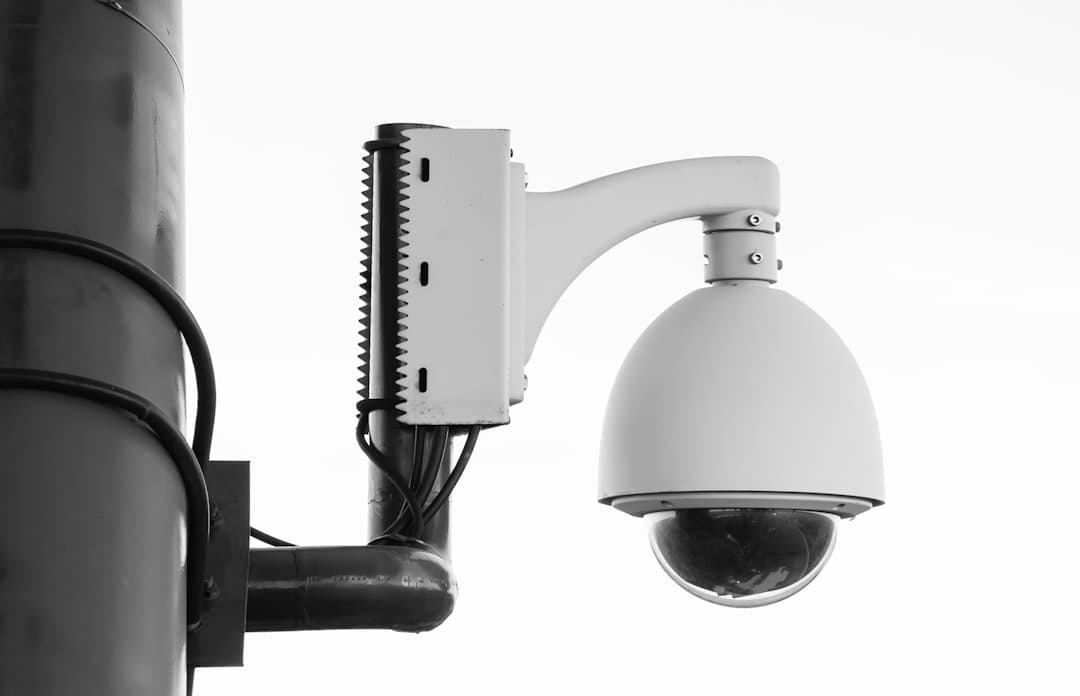Data protection is a crucial aspect of organizational operations across all industries and company sizes. In the modern digital era, businesses heavily depend on data collection, storage, and processing to drive operations and inform decision-making. This data often includes sensitive customer information, financial records, intellectual property, and other proprietary information.
If compromised, such data breaches can have severe consequences for the organization and its stakeholders. Maintaining customer and client trust is a primary reason for prioritizing data protection. When individuals share personal information with a company, they expect it to be handled securely and with care.
Data breaches can result in financial losses and irreparable reputational damage for organizations. Furthermore, many jurisdictions have implemented strict regulations governing personal data protection, with non-compliance potentially leading to significant fines and legal consequences. Organizations must also consider internal risks, such as employee negligence or malicious intent, in addition to external threats.
Implementing robust data protection measures is essential to safeguard against both internal and external threats. By prioritizing data protection, organizations can reduce the risk of data breaches, maintain regulatory compliance, and preserve the trust of their customers and stakeholders.
Key Takeaways
- Data protection is crucial for safeguarding sensitive information and maintaining trust with customers and clients.
- Strong passwords and two-factor authentication are essential for preventing unauthorized access to data and accounts.
- Regular data backups are necessary to ensure that important information can be recovered in the event of a security breach or data loss.
- Utilizing secure networks and VPNs can help protect data when accessing it remotely or on public Wi-Fi networks.
- Educating employees on data security best practices is important for creating a culture of security within an organization.
Implementing Strong Passwords and Two-Factor Authentication
One of the fundamental steps in ensuring data protection is implementing strong passwords and two-factor authentication (2FA) across all systems and accounts. Weak or easily guessable passwords are a significant vulnerability that can be exploited by cybercriminals to gain unauthorized access to sensitive data. Therefore, organizations should enforce password policies that require employees to create complex passwords that include a combination of letters, numbers, and special characters.
Additionally, passwords should be regularly updated to reduce the risk of unauthorized access. In addition to strong passwords, two-factor authentication provides an extra layer of security by requiring users to provide two forms of identification before accessing an account or system. This typically involves something the user knows (such as a password) and something they have (such as a unique code sent to their mobile device).
By implementing 2FA, organizations can significantly reduce the risk of unauthorized access, even if a password is compromised. Furthermore, organizations should consider using password management tools that enable employees to securely store and generate complex passwords for different accounts. These tools not only simplify password management but also enhance security by reducing the likelihood of employees using weak or repetitive passwords across multiple accounts.
One of the fundamental steps in ensuring data protection is implementing strong passwords and two-factor authentication (2FA) across all systems and accounts. Weak or easily guessable passwords are a significant vulnerability that can be exploited by cybercriminals to gain unauthorized access to sensitive data. Therefore, organizations should enforce password policies that require employees to create complex passwords that include a combination of letters, numbers, and special characters.
Additionally, passwords should be regularly updated to reduce the risk of unauthorized access. In addition to strong passwords, two-factor authentication provides an extra layer of security by requiring users to provide two forms of identification before accessing an account or system. This typically involves something the user knows (such as a password) and something they have (such as a unique code sent to their mobile device).
By implementing 2FA, organizations can significantly reduce the risk of unauthorized access, even if a password is compromised. Furthermore, organizations should consider using password management tools that enable employees to securely store and generate complex passwords for different accounts. These tools not only simplify password management but also enhance security by reducing the likelihood of employees using weak or repetitive passwords across multiple accounts.
Regular Data Backups

Regular data backups are essential for protecting against data loss due to hardware failure, human error, cyberattacks, or other unforeseen events. By maintaining up-to-date backups of critical data, organizations can minimize the impact of potential disruptions and quickly restore operations in the event of a data loss incident. It is crucial for organizations to establish a comprehensive backup strategy that includes regular backups of all essential data, as well as testing the integrity and restorability of backups on a periodic basis.
This ensures that in the event of a data loss incident, the organization can quickly recover its operations without significant downtime or loss of critical information. Moreover, organizations should consider implementing automated backup solutions that can streamline the backup process and ensure that backups are performed consistently without relying on manual intervention. Cloud-based backup solutions offer added flexibility and security by storing data off-site, reducing the risk of data loss due to physical damage or theft.
Regular data backups are essential for protecting against data loss due to hardware failure, human error, cyberattacks, or other unforeseen events. By maintaining up-to-date backups of critical data, organizations can minimize the impact of potential disruptions and quickly restore operations in the event of a data loss incident. It is crucial for organizations to establish a comprehensive backup strategy that includes regular backups of all essential data, as well as testing the integrity and restorability of backups on a periodic basis.
This ensures that in the event of a data loss incident, the organization can quickly recover its operations without significant downtime or loss of critical information. Moreover, organizations should consider implementing automated backup solutions that can streamline the backup process and ensure that backups are performed consistently without relying on manual intervention. Cloud-based backup solutions offer added flexibility and security by storing data off-site, reducing the risk of data loss due to physical damage or theft.
Utilizing Secure Networks and VPNs
| Metrics | Values |
|---|---|
| Number of secure network connections | 150 |
| VPN uptime | 99.9% |
| Number of VPN users | 200 |
| Incidents related to unauthorized access | 2 |
Securing networks and implementing virtual private networks (VPNs) are crucial measures for protecting data as it is transmitted over internal and external networks. Secure networks help prevent unauthorized access to sensitive information by implementing firewalls, intrusion detection systems, and encryption protocols to safeguard against potential threats. Additionally, VPNs create a secure encrypted connection between remote users and the organization’s internal network, effectively shielding data from interception or eavesdropping by malicious actors.
This is particularly important for employees who work remotely or access sensitive information while on public Wi-Fi networks. Furthermore, organizations should regularly assess their network security posture through vulnerability assessments and penetration testing to identify and address potential weaknesses in their network infrastructure. By proactively monitoring and securing their networks, organizations can reduce the risk of unauthorized access and data interception.
Securing networks and implementing virtual private networks (VPNs) are crucial measures for protecting data as it is transmitted over internal and external networks. Secure networks help prevent unauthorized access to sensitive information by implementing firewalls, intrusion detection systems, and encryption protocols to safeguard against potential threats. Additionally, VPNs create a secure encrypted connection between remote users and the organization’s internal network, effectively shielding data from interception or eavesdropping by malicious actors.
This is particularly important for employees who work remotely or access sensitive information while on public Wi-Fi networks. Furthermore, organizations should regularly assess their network security posture through vulnerability assessments and penetration testing to identify and address potential weaknesses in their network infrastructure. By proactively monitoring and securing their networks, organizations can reduce the risk of unauthorized access and data interception.
Educating Employees on Data Security Best Practices
Employees play a crucial role in maintaining data security within an organization. Therefore, it is essential to provide comprehensive training on data security best practices to all staff members. This includes educating employees on how to recognize phishing attempts, avoid clicking on suspicious links or downloading unknown attachments, and identifying potential security threats.
Moreover, employees should be made aware of the importance of safeguarding sensitive information both within the organization’s premises and when working remotely. This includes securely storing physical documents containing sensitive information and being mindful of their surroundings when discussing confidential matters. Regular training sessions and awareness campaigns can help reinforce the importance of data security among employees and empower them to become proactive in identifying and reporting potential security incidents.
By fostering a culture of vigilance and accountability among employees, organizations can significantly reduce the risk of human error leading to data breaches. Employees play a crucial role in maintaining data security within an organization. Therefore, it is essential to provide comprehensive training on data security best practices to all staff members.
This includes educating employees on how to recognize phishing attempts, avoid clicking on suspicious links or downloading unknown attachments, and identifying potential security threats. Moreover, employees should be made aware of the importance of safeguarding sensitive information both within the organization’s premises and when working remotely. This includes securely storing physical documents containing sensitive information and being mindful of their surroundings when discussing confidential matters.
Regular training sessions and awareness campaigns can help reinforce the importance of data security among employees and empower them to become proactive in identifying and reporting potential security incidents. By fostering a culture of vigilance and accountability among employees, organizations can significantly reduce the risk of human error leading to data breaches.
Updating and Patching Software Regularly

Regularly updating and patching software is crucial for addressing known vulnerabilities that could be exploited by cybercriminals to gain unauthorized access to systems or compromise sensitive data. Software vendors frequently release updates that include security patches designed to address newly discovered vulnerabilities or weaknesses in their products. Organizations should establish a robust patch management process that ensures all software applications and operating systems are regularly updated with the latest patches.
This includes implementing automated patch management tools that can streamline the process and ensure that critical updates are applied promptly across all systems. Furthermore, organizations should conduct regular vulnerability assessments to identify potential weaknesses in their software infrastructure and prioritize patching based on the severity of identified vulnerabilities. By staying proactive in updating and patching software regularly, organizations can significantly reduce the risk of exploitation by cyber threats.
Regularly updating and patching software is crucial for addressing known vulnerabilities that could be exploited by cybercriminals to gain unauthorized access to systems or compromise sensitive data. Software vendors frequently release updates that include security patches designed to address newly discovered vulnerabilities or weaknesses in their products. Organizations should establish a robust patch management process that ensures all software applications and operating systems are regularly updated with the latest patches.
This includes implementing automated patch management tools that can streamline the process and ensure that critical updates are applied promptly across all systems. Furthermore, organizations should conduct regular vulnerability assessments to identify potential weaknesses in their software infrastructure and prioritize patching based on the severity of identified vulnerabilities. By staying proactive in updating and patching software regularly, organizations can significantly reduce the risk of exploitation by cyber threats.
Monitoring and Responding to Suspicious Activity
Monitoring for suspicious activity across networks and systems is essential for detecting potential security incidents before they escalate into full-blown breaches. Organizations should implement robust monitoring tools that provide real-time visibility into network traffic, system logs, user activities, and other critical indicators of potential security threats. Moreover, organizations should establish clear incident response protocols that outline how potential security incidents are identified, reported, investigated, and remediated.
This includes designating responsible personnel or teams for managing security incidents and ensuring that all staff members are aware of their roles in responding to potential threats. In addition to proactive monitoring, organizations should conduct regular security audits to assess their overall security posture and identify areas for improvement. By continuously monitoring for suspicious activity and promptly responding to potential security incidents, organizations can effectively mitigate the impact of cyber threats on their operations.
Monitoring for suspicious activity across networks and systems is essential for detecting potential security incidents before they escalate into full-blown breaches. Organizations should implement robust monitoring tools that provide real-time visibility into network traffic, system logs, user activities, and other critical indicators of potential security threats. Moreover, organizations should establish clear incident response protocols that outline how potential security incidents are identified, reported, investigated, and remediated.
This includes designating responsible personnel or teams for managing security incidents and ensuring that all staff members are aware of their roles in responding to potential threats. In addition to proactive monitoring, organizations should conduct regular security audits to assess their overall security posture and identify areas for improvement. By continuously monitoring for suspicious activity and promptly responding to potential security incidents, organizations can effectively mitigate the impact of cyber threats on their operations.
If you’re interested in exploring the potential impact of the metaverse on data protection, you may want to check out this article on Metaverse and Industries: Healthcare and Wellness. This article delves into how the metaverse is being utilized in the healthcare industry and the implications for data protection and privacy. It provides valuable insights into the intersection of virtual spaces and sensitive personal information, shedding light on the importance of robust data protection measures in the metaverse.
FAQs
What is data protection?
Data protection refers to the process of safeguarding important information from corruption, compromise or loss. This can include personal data, financial information, intellectual property, and more.
Why is data protection important?
Data protection is important because it helps to ensure the privacy and security of sensitive information. It also helps to prevent identity theft, fraud, and unauthorized access to personal or confidential data.
What are some common methods of data protection?
Common methods of data protection include encryption, access controls, regular data backups, firewalls, antivirus software, and secure password policies.
What are the legal requirements for data protection?
Many countries have laws and regulations in place to protect personal data, such as the General Data Protection Regulation (GDPR) in the European Union and the California Consumer Privacy Act (CCPA) in the United States. These laws outline requirements for how personal data should be collected, processed, and stored.
What are the consequences of not having proper data protection measures in place?
Without proper data protection measures, organizations and individuals are at risk of data breaches, financial loss, reputational damage, and legal consequences. Data breaches can result in the exposure of sensitive information, leading to identity theft and fraud.











Leave a Reply